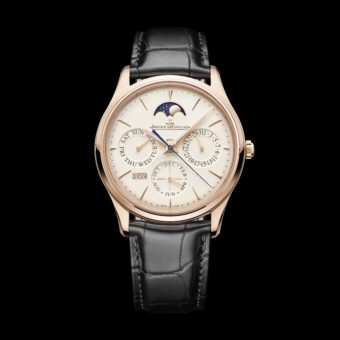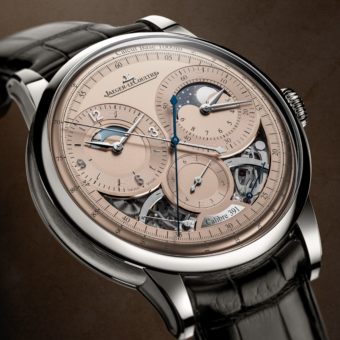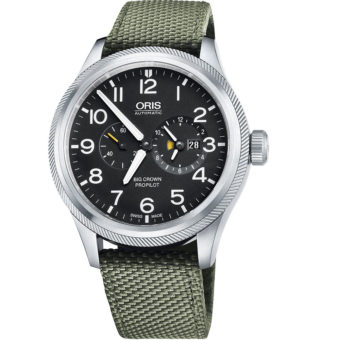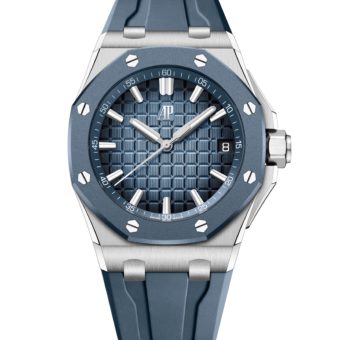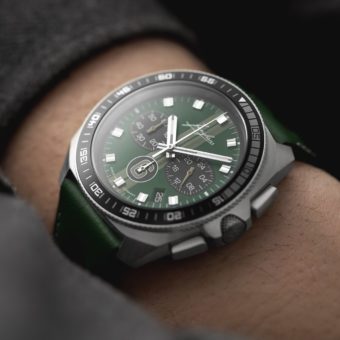
Jaeger-LeCoultre presents its second online auction, taking place from March 18, 2010, to benefit the UNESCO World Heritage Center. This year, the Manufacture is offering an iconic and unique timepiece: one of the two vintage 1958 Geophysic Chronometers Model E168 tested by professional climber Stephane Schaffter and his team during their recent Geophysic Expedition to the Himalayas.
The online auction will start on March 18th, 2010 at 12.00 C.E.T. and ends on March 24th, 2010 at 12.00 C.E.T. Join the bidding for a worthy cause, visit www.auction.jaeger-lecoultre.com from March 10th.
About the Watch
Geophysic Chronometer Model E168 production was limited to just 1290 pieces. Since the 1950s, it has become one of the most iconic pieces in the history of the Grande Maison, and was the inspiration behind the latest breakthrough, the Master Compressor Extreme LAB2 introduced at the SIHH 2010 in Geneva. The watch up for auction is an authentic Model E168, sourced from Jaeger-LeCoultre, casing number 748166, Calibre Jaeger-LeCoultre P478BWSbr, manufactured in 1958. Its genuine Calibre P478BWSbr is part of the Calibre version which was manufactured only to 2500 pieces between 1957 and 1959. It comes with the very Ostrich leather strap used by the climbers, along with a second new black leather strap, dedicated Geophysic packaging and the extract from the Archives Jaeger-LeCoultre.
The 1958 Geophysic Chronometer is one of the most important models in the history of Jaeger-LeCoultre and fine watchmaking. It was created during The International Geophysical Year. The technical characteristics of the watch matched the needs of researchers, whether on polar base stations, in laboratories or during underwater expeditions. The Geophysic Chronometer was equipped with a case resistant to magnetic fields up to 600 gauss – at that time an extraordinary quantity – during an era when magnetic fields represented one of the main areas of scientific study. The precision, the resistance, and the reliability of the watch made it an emblem of excellence – to the extent that when a group of residents of Geneva, decided to honor the feat accomplished by the American atomic submarine Nautilus, which had just reached the North Pole, they chose the Geophysic Chronometer as their symbolic gift.
About the Auction
Proceeds from the auction will go to India’s Sundarbans UNESCO World Heritage site, created in 1987. The Sundarbans mangrove forest, one of the largest such forests in the world (approx. 350,000 acres), lies on the delta of the Ganges, Brahmaputra and Meghna rivers on the Bay of Bengal, adjacent to its border. The site is intersected by a complex network of tidal waterways, mudflats and small islands of salt-tolerant mangrove forests, and presents an excellent example of ongoing ecological processes. The area is known for its wide range of fauna, including 260 bird species, the Bengal tiger and other threatened species such as the estuarine crocodile and the Indian python.
The World Heritage Committee identified the site as one of the largest remaining areas of mangroves in the world. In the context of its “Making Time More Beautiful” approach, which endeavors both to preserve the exceptional natural environment of the Vallée de Joux and to support ambitious projects on an international scale, Jaeger-LeCoultre has a long-term partnership with the UNESCO World Heritage Center and the International Herald Tribune to help defend and protect outstanding marine sites that require immediate intervention to be saved. The auction is a chance for watch lovers and collectors to participate in this worthy cause.
You may click the images to view larger versions.





